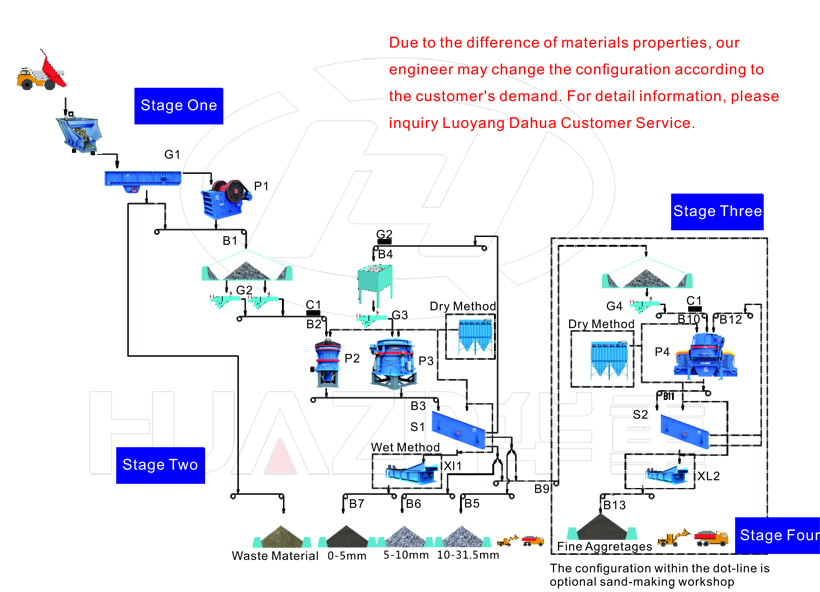Product Knowledge
What are the Stages of Crushing Rock?
author:dahua2 time:2024-05-09
It is common to use multiple crusher types within a project and set them up as stations in a circuit format to perform the necessary material reduction work. In many cases, primary, secondary, and tertiary, and quaternary crushing stations are installed to reduce the rock to the desired size, shape, and consistency.
Of course, not all projects require all the stations or stages. Sometimes, primary crushing alone may offer enough reduction for your needs.
For instance, if the final size of your product only needs to be between 4 inches and 6 inches, a primary jaw or impact crusher can accomplish your goals. However, you will likely require a much finer product, and that means incorporating up to three—or even four—stations with a variety of crusher types.
1. Primary Crushing
As the first stage in a crushing circuit following extraction from a mine site, (or in the case of recycled asphalt production, delivery to the RAP processing plant via truck transport), primary crushing reduces material to a size and shape that can be handled by the secondary crusher.
Typically, the minimum setting on most primary crushers will be about 4 to 6 inches, as noted above. Compression-style jaw, cone, impact crushers, and gyratory crushers are most often appropriate as primary crushing equipment types, though there can be overlap between primary and secondary crushers as far as suitable types.
2. Secondary Crushing
In secondary crushing, reduction ratios become an essential consideration. Knowing just how fine you need your final output to be, along with the feed requirements of your tertiary or final reduction crushing station, will help you determine how much reduction needs to take place within this stage.
Cone crushers are often placed within the secondary crushing station because they are versatile in terms of feed, closed side setting, speed, and throw. With cone crushers, though, it is essential to operate them at consistent choked settings to keep productivity up.
3. Tertiary/Quaternary/Final Reduction Crushing
The goal of the tertiary (third), quaternary (fourth) or final reduction stage of the crushing process is to size and shape rock or other material into a marketable product. Again, there may be overlap between stages in terms of which crusher styles work best.
Cone crushers, vertical shaft impactors (VSIs), horizontal impact crushers, or even high-pressure grinding roll crushers may be used in the final reduction position.
Types of Rock Determine the Crushers You Need
Sandstone, limestone, gravel, and granite are arguably the most common aggregates used in the construction industry today, but these rocks have very different hardness and abrasiveness characteristics.
The type of rock you plan to focus on processing in your operation will dictate the types of rock crushers you’ll need to include in your crushing circuit.
The more you know about the type of rock you wish to crush and what its end-use will be, the easier it is to choose the best equipment to achieve your project goals.
Previous Article:No Information
Next Article: Choose Stationary Crusher Plant Or Mobile Crusher Plant?







